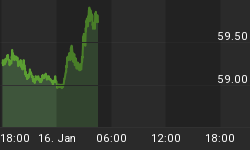Originally posted on The Federal Reserve website, The Market Oracle, The Wall Street Journal, and Brookings.
Mainstream and Internet media sources have (and continue to be) replete with stories on last Wednesday's U.S. Federal Reserve statements. As you likely are well aware, the U.S. financial markets and the gold market all fell significantly after 3:00 p.m. ET Wednesday, continued to fall on Thursday, and fell again yesterday.
Broadly, these drops are being attributed to market concerns of an earlier than hoped for Fed pullback from its current $85 billion/month monetary stimulus program, and to some degree escalating concern over China banking and possible economic slowdown. Because I don't see a U.S. quantitative easing pullback happening in any predictable fashion, and certainly not in near months, for me that emphasizes:
-
a 'market skittishness' that is far more sensitive to Mr. Bernanke's 'every word' and 'innuendo' that it ought to be, and financial markets that are fragile, ever more volatile, and hence ever more risky;
-
that the current markets clearly are not 'value' markets, but are 'trading markets'. I would have thought sophisticated financial market participants have to know that Federal Reserve quantitative easing can't go on forever, and in a 'value market' that certainty, subject to timing, would be in theory 'priced in'. Most of 'current value' at any given point in time is 'value' attributable to the time period beyond two years from any given valuation date. Hence, as I see things, for the financial markets to react immediately to the thought that quantitative easing is going to end sooner than later has to be more a 'kneejerk reaction' to an overpriced market than it is a sensible reaction to a properly priced market;
-
I also would have thought sophisticated financial market participants have to know that the Fed does not have a magic wand that it can wave, and that no one really knows the timing of achievement (if indeed it happens) of the Fed's now stated (see Wednesday's Press Release) U.S. unemployment rate target of 6.5% where the Fed's quantitative easing 'pullback' may begin; and,
-
I continue to believe the U.S. Federal Reserve is in uncharted waters, will simply continue to vacillate for some time, and in the interim will continue to - like water - find the easiest course 'downhill' which for now is to continue its current $85 billion a month monetary stimulus program.
As usual, I suggest you read Wednesday's Federal Reserve Press Release and reach your own conclusions.
Read the full posts on The Federal Reserve website (reading time 3 minutes), The Market Oracle (reading time 5 minutes), The Wall Street Journal (reading time 3 minutes), and Brookings (reading time 2 minutes).
















